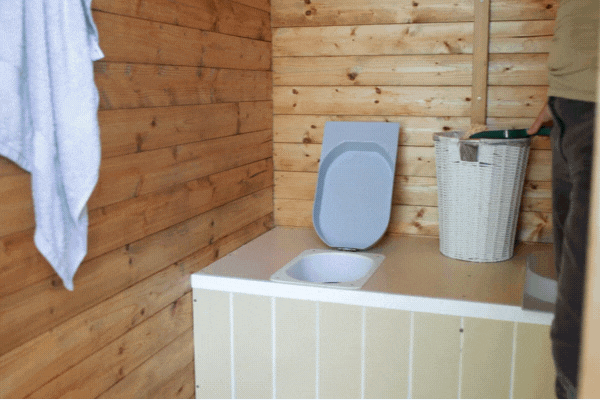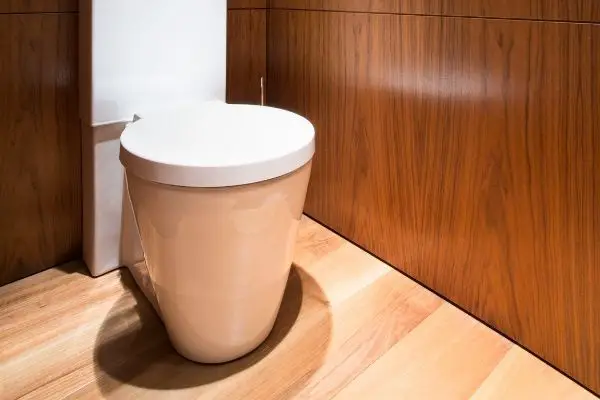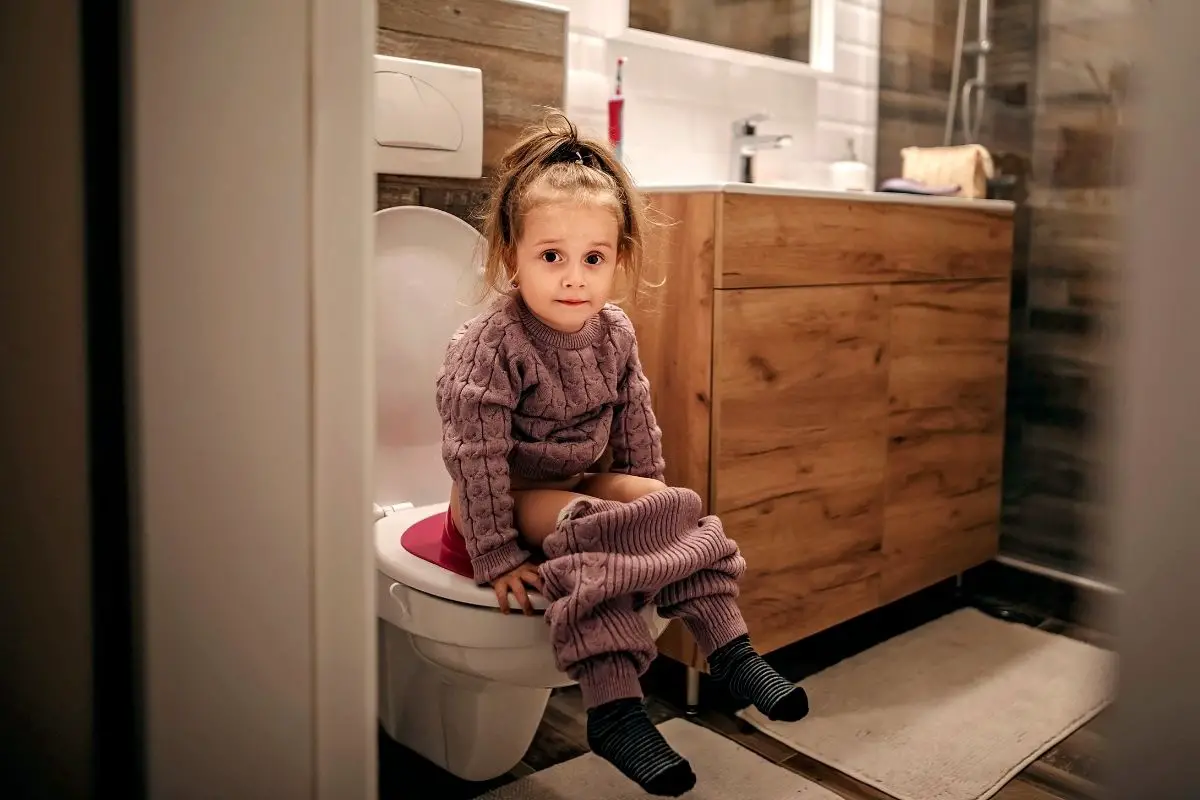How Do Compostable Toilets Work? | Eco Friendly Toilet
I always dream of living sustainably with minimal – possibly none – impact on our planet! Then, I think of the comforts I am used to, like the toilet!

If you’ve only just stumbled across composting toilets, then you’ve probably got a few questions about how they work. Luckily for you, we’re here to tell you all there is to know about this interesting and eco-friendly invention.
What is a composting toilet?
A composting toilet is an alternative type of waste disposal that doesn’t require water or plumbing. Instead, it treats human waste through the biological process of composting. The composting process breaks down the waste, eventually turning it into a safe, soil-like substance – not very different from the composting process our food scraps go through.
Every composting toilet will have a different design, but generally, toilet users cover their waste with sawdust or peat moss after every use. This creates individual air pockets that help the waste break down quicker and trapping some of the odor inside the toilet.
If your local guidelines allow it, you might be able to use the compost that your toilet produces in your garden or agricultural endeavors.

Composting toilets are a fantastic way to reduce your impact on the environment whilst saving some money on water bills in the process. They’re also a great educational tool and could be an amazing way to have some scientific fun with the family. For more information on the benefits – and drawbacks – of a composting toilet, check out our article detailing just that!
The Main Types of Compostable Toilets
There are two main types of composting toilets: self-contained and central. Below, we’ll give you a quick overview of both and attempt to explain the advantages of each one.
Self-Contained
A self-contained compost toilet has a waste tank attached to the base of the device. Put simply; it is an “all-in-one” solution that doesn’t require any complex plumbing or installation. If you wanted to, you could pick up a self-contained compost toilet and move it to another location without any problems.
Self-contained and central composting toilets require plenty of ventilation to ensure a good amount of aerobic bacteria break down the waste. Self-contained versions usually have an electric fan built into the waste tank, which means they must be plugged into the mains to work.
Central
A central composting toilet can be thought of as a more permanent solution. Instead of having the tank built into the toilet, a whole system is installed elsewhere, typically below your house or building.
As you might expect, a central toilet isn’t “portable” like a self-contained one is, but it has its own advantages. For example, the waste tank of a central compost toilet can be much larger than in a self-contained toilet and doesn’t have to be emptied as often. In fact, some central compost toilets only have to be emptied once a year!
Since centralized systems are much larger and more complex than self-contained compost toilets, they are most often used in offices and commercial settings.
Which Type is Best?
If you’re trying to choose between a centralized or self-contained composting toilet, then there are a few considerations to make. Firstly, there’s a pretty significant price difference – a centralized toilet commands a much bigger price tag, which is another reason businesses mainly use them.
On the other hand, a centralized composting system typically requires less maintenance and doesn’t have to be emptied as much as a self-contained version. It’s hard to say which compost toilet type is best, and it really comes down to what you’re going to be using your toilet for.
For some suggestions about which products to consider, check out this guide on the best compost toilets that money can buy!
How Do Compostable Toilets Work?
Now that we’ve discussed the two main types of composting toilets, it’s time to touch on how they actually work. Both types work similarly and follow the same basic processes that we’re going to outline here.

Composting chamber is filled
For a composting toilet to get to work, the chamber needs to be “filled” with some waste. If you have a self-contained compost toilet, we recommend covering the waste with wood chips after every use. This will improve the efficiency of the composting, as well as trap any unpleasant odors.
There’s no need to add any harmful chemicals to the chamber; just let the composting processes get to work. A composting toilet can work so effectively thanks to the incredibly oxygen-rich environment created in the chamber. This creates a large population of aerobic bacteria that works to break the solid waste down into compost.
Solid waste and liquid waste is separated
Most composting toilets will separate the solid and liquid waste before it reaches the main chamber to improve the efficiency of the decomposition process and create better compost. Practically, this usually involves a urine catcher towards the front of the toilet bowl and a solid waste chute at the rear.
Waste is removed and emptied
Most brands recommend emptying a self-contained composting toilet after approximately 80 uses. Please note that this does NOT apply to centralized composting toilets – these have a much larger chamber and rarely have to be emptied.
It’s always best to leave your toilet for 8 hours after use before emptying it, which gives the final waste time to decompose. After this time, the solid waste should look like dirt and shouldn’t have any unpleasant smell.
The solid waste can then be added to a compost pile. With liquid waste, your best bet is to pour it away outside somewhere it would usually be acceptable to urinate. Once the solid and liquid tanks have been emptied, put the toilet back together, and you’ll be good to go.
If there’s any compost left at the chamber base, you can leave that where it is. It will help kickstart the decomposition process next time you use the toilet.
The Benefits of Using a Composting Toilet System
When people first hear about composting toilets, their first reaction is usually quite skeptical. However, when they start to understand the cool benefits that a compost toilet offers, most will start to get on board right away.

Do NOT require water
One of the biggest advantages of a compost toilet is that it doesn’t require any water to function. This is because waste does not have to be flushed away and carried along sewage pipes for miles and miles.
Traditional toilets are well-known for their negative impact on the environment. In fact, some toilets use around 7 gallons of water for every flush! Even so-called “low-flush” toilets typically use over a gallon of water each time. Composting toilets present a solution to the water usage problem that nothing else quite can.
Additionally, it’s worth remembering that water is expensive (AND precious!). With water prices ever on the rise, having a toilet that isn’t going to drain your income is a real benefit. If you find that you’re spending too much on your water bills, it might be worth looking into a composting toilet to make some savings.
Can be used off-grid
As well as not using water, many composting toilets can also be used completely off-grid. This means they don’t need any electricity and don’t require any external energy during the composting process. Again, this can be a big financial saving, as well as reducing your carbon footprint.
If you do want to use your toilet without electricity, then it’s important to look for one that doesn’t require an electric fan. Some compost toilets have a fan built-in to provide extra ventilation, but this isn’t completely necessary.
One of the best examples of composting toilets being used in this way is in remote campsites. Many rural camping areas don’t have electricity, so any facilities must be fully self-sufficient. Having a block of composting toilets is an amazing way to maintain a sustainable campsite whilst offering comfortable amenities to the guests.
Less expensive than a septic system
A septic tank is a type of on-site system that treats human waste without being transferred far away from the area. As a result, you’d typically find a septic system with no easy access to the main sewage network, such as remote houses and businesses.
A septic tank is quite similar to a centralized composting toilet system, but the fresh waste is gathered from a traditional toilet. Despite their similarities, septic systems are usually much more expensive to buy and install than their composting counterparts. Septic tanks also usually require more complex pipework, which can add even more additional costs.

In summary, if you’re choosing between a septic tank or composting system and cost is your biggest concern, then a composting chamber is definitely the way to go.
Frequently Asked Questions
Do you have to empty a composting toilet?
Yes, at some point, you’ll have to empty your composting toilet. The frequency that you’ll have to do this completely depends on the size of your composting chamber – some large centralized systems only have to be emptied once a year, whereas smaller self-contained toilets will need more regular cleaning.
As long as you give your toilet enough time to break down the human waste, then the emptying experience should never be particularly unpleasant. If done correctly, the toilet should produce a soil-like substance that is easy to remove and dispose of. One of the best ways to deal with the compost material is to add it to an existing compost pile, which can then be used during gardening.
Do composting toilets smell bad?
A big assumption that people make about composting toilets is that they must smell bad. In reality, though, this really isn’t true. When a compost toilet is used correctly, nearly all of the odor is trapped within the composting chamber and is completely removed as the waste breaks down.
Having said that, if you don’t correctly use a composting toilet, it can quickly start to develop a smell. This can also happen if you don’t empty the chamber often enough.
If you’re using a self-contained compost toilet, one of the best ways to ensure it doesn’t get smelly is to cover any waste with wood chips or peat moss after every use. This creates air pockets that trap in the scent and gives the aerobic microbes the space to start breaking down the waste.
How much does a composting toilet cost?
Composting toilets can range in price quite dramatically. This is especially true when you start comparing large, “centralized” compost systems with smaller self-contained devices. That said, you can expect to pay around $1000 USD for a self-contained toilet, and centralized systems can demand upwards of $10000 USD.
Although this might sound expensive, it’s important to remember that the running costs associated with a compost toilet are practically zero. This is particularly true for water bills since a conventional toilet is usually a household’s biggest water expense.
Can you speed up a composting toilet?
If you’d like your composting toilet to work a little bit more efficiently, then it’s actually possible to speed up the decomposition process. The most popular way to do this is to add worms to the compost chamber, which will assist the aerobic bacteria in breaking down the solid waste.
A device that is set up like this is sometimes called a “vermicomposting toilet.” You should know that you can’t use any old worms, though – you’ll most likely have to purchase specialist worms that are specialized in decomposition.





